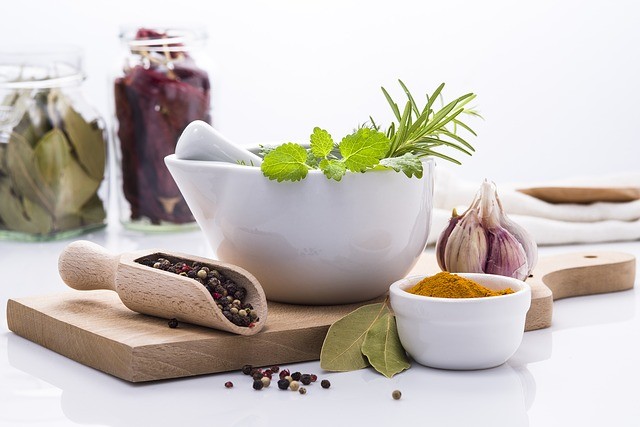Learn some natural ways and treatments for the most common medical problems. Check out the article we found over at Precision Nutrition.
Wondering about natural treatments for high cholesterol? Blood pressure? Diabetes? Autoimmune disease? Thyroid? Lots of clients come to us after being diagnosed with something new (and scary). We help them eat, exercise, and supplement to turn things around.
On the face of it, what we do at Precision Nutrition — helping people lose weight and look and feel their best — must seem like lots of fun.
In many ways, it is. We help our clients work healthy eating and exercise into their lives in ways that work for them, and then 12 months later I get to share their inspiring nutrition-coaching stories, full of challenges, doubts, perseverance, and triumph — along with their amazing before and after shots.
I’ll admit, those aspects are really exciting.
But most of our clients come to us for a reason that’s much more serious than wanting to look better.
Sure, I like helping people get into shape and improve their daily habits. But honestly, giving people the information, accountability, and support to address these types of health problems through nutrition and other lifestyle choices is far more exciting to me.
Because this is the kind of stuff that truly changes — or even maybe saves — lives.
Here are the guidelines for dealing with these health problems naturally.
High cholesterol
Cholesterol is a fat-like substance that has a lot of important roles in the body. In other words, we need it.
But when you have too much cholesterol, the lipoproteins carrying it can get caught in the artery walls, combining with calcium, fat, cellular waste, and fibrin (a material involved in blood clotting) to form the plaques that cause clogs.
It’s important to know that high cholesterol isn’t just one thing: You could have high total cholesterol, high LDL (“bad”) cholesterol, and/or high triglycerides (another measure of fat in the blood).
So, why’s it high? Well, sometimes high cholesterol is genetic. Other times it’s from eating too much saturated fat (from animal foods) and not enough plants.
What you can do about it
Statin drugs and other blood lipid lowering chemicals are often seen as a quick fix.
Yet these drugs can come with side effects like memory loss, difficulty concentrating, lowered exercise tolerance, muscle pain, and depression — which, ironically, make it pretty tough to prioritize lifestyle changes that could turn your health around.
While these meds may be needed in many cases, revamping your diet can be a powerful supplementary — or even alternative — treatment.
If your LDL cholesterol level is between 160 and 190 and you don’t have heart disease, diabetes, or other risk factors, Dr. Nadolsky says, ask your doc about lifestyle changes you can make before going on meds.
If your LDL level is above 190, most doctors will insist on a prescription — unless they can trace your levels to an obvious diet choice (for example, more than one of Dr. Nadolsky’s patients have seen cholesterol go down when they rein in their Bulletproof Coffee habit).
Using these lifestyle strategies can help you avoid meds (or reduce the amount of time you’re on them).
Diet
When body fat goes down, cholesterol and especially triglycerides go down.
So if you’re overweight, consider changing your habits to get to a healthy weight. (Luckily, most people see benefits from even a little weight loss, perhaps just a few pounds. You don’t have to become an underwear model to be healthy.)
Dr. Nadolsky says a diet based heavily on plants is a good bet.
This will help you:
- lower your saturated fat intake, which alone can help lower cholesterol (the biggest saturated fat culprits: processed foods and animal products); and
- get more vitamins, minerals, phytonutrients and healthy fats, which have their own positive effect.
You don’t have to give up meat completely. Just add more plants.
Some ways to get there:
- Add one serving of vegetables and/or fruits to each meal. Look for colorful plants (such as dark leafy greens, orange carrots, or purple berries), and add a handful or two to each meal.
- Look for whole grain substitutes where possible. Think wild or brown rice instead of white; sprouted bread instead of white bread; or oats instead of your regular breakfast cereal. Adding these whole grains may lower your risk of clogged arteries by 30 percent.
- Add a serving of legumes. Foods like beans, lentils, and chickpeas not only taste good; they’re high in fiber, which binds to cholesterol in the digestive tract.
- Add nuts, seeds, fatty fish (such as salmon), avocado, and olive oil. They contain healthy fats, which lower LDL and raise HDL (“good” cholesterol).
If you have high triglycerides, try lowering your sugar intake. Since your liver uses sugar to make triglycerides, less sugar means less excess blood fat.
Exercise
Working out — especially a combo of cardio and resistance work — helps lower cholesterol by:
- helping you lose body fat (remember: less body fat equals less blood fat);
- changing certain enzymes that can decrease your triglycerides; and
- helping lower stress (which also contributes to poor cholesterol profiles and CVD).
If possible, do a little something every day. Even a 20-minute walk after a meal can tidy up triglycerides.
Work up to about 5 hours a week, and try to do a mix of low- and high-intensity activity, including weights, intervals, and low-intensity cardio. All activity — whether in the gym or not — counts!
By the end of the Precision Nutrition program, Ken’s resting heart rate had gone from 96 beats per minute to 59. His blood pressure reading was 110/60. And after his cholesterol test, his doctor called him. “Nobody your age is supposed to be this healthy,” his doctor said. “I need the information about this program so I can give it to my other patients.”
Type 2 diabetes
In Type 2 diabetes, there’s a problem with insulin, a hormone secreted by the pancreas when blood sugar goes up, usually after a meal.
Insulin resistance and/or an inappropriate insulin response can prevent glucose from being properly stored. This leads to chronic high blood sugar (hyperglycemia).
Type 2 diabetes is characterized by:
- obesity (especially fat in the abdominal cavity)
- cardiovascular disease
- systemic inflammation
- muscles that don’t store nutrients well
What your diagnosis means
Type 2 diabetes dramatically increases the risk of premature death and disability.
For example:
- At least 65 percent of people with diabetes die of some form of cardiovascular disease, like a heart attack or stroke.
- Diabetes is the leading cause of new cases of blindness among adults aged 20 to 74 years.
- Diabetes is the leading cause of kidney failure.
What you can do about it
Your doctor may have put you on one or more medications to stimulate insulin production, inhibit glucose production, or improve insulin sensitivity.
Regardless of what med(s) you’re on, lifestyle changes are the foundation of treating type 2 diabetes.
Diet
Any eating style that helps you lose weight is going to improve your blood sugar level. That’s because when fat in the abdomen and surrounding your organs goes away, insulin resistance starts to go away, too, Dr. Nadolsky says.
There are lots of arguments for a moderate-carb Mediterranean-style diet, which research shows can control blood sugar control and reduce waist circumference better than other diets.
That’s because the diet:
- reduces the processed sugars and starches that you’re consuming,helping decrease blood sugar.
- replaces saturated fat (from foods like butter and red meat) with healthy fats (from fatty fish and olive oil).
- increases plant intake, which provides phytonutrients that may improve insulin sensitivity and fiber, which slows your sugar absorption.
High blood pressure
In the past, you hardly paid attention to these two numbers rattled off by the nurse at your doctor’s office.
Now, you’ve been told your blood pressure is chronically high, and suddenly you need to understand them.
- The top number (systolic) is the pressure in your arteries during a heartbeat.
- The bottom number (diastolic) is the pressure in your arteries while your heart is resting between beats.
High blood pressure, or hypertension, is related to the stiffening of blood vessels and arteries, and can be caused by:
- A problem with your kidneys’ salt balancing function
- Hormone imbalance
- Immune problems
- Genetics
- Being sedentary
- Excessive alcohol intake
- Excessive sodium intake (usually from processed foods)
- Being overweight or obese
- Stress
What your diagnosis means
Blood pressure has a significant effect on how healthy you can hope to be in the future.
High blood pressure can put you at risk for all sorts of health problems. If the pressure damages the blood vessels in your:
- eyes, you could end up blind.
- kidneys, you could end up on dialysis.
- heart, you could end up with a heart attack.
- brain, you could end up having a stroke or developing Alzheimer’s.
- legs and arms, you could end up with peripheral vascular disease.
What you can do about it
Just like the 35-year-old man above, if you address your blood pressure now, you cut your risk of related health problems and death substantially.
Diet
Here again, getting (and staying) at a healthy weight and body fat level is your goal. Fat cells produce substances that promote pressure-promoting inflammation throughout the blood vessels and heart.
Some guidelines:
- Add one serving of vegetables and/or fruits to each meal. The more plants in your diet, the better. This will help you lower your sodium intake and also increase intake of nutrients like potassium and magnesium, which help lower blood pressure by improving vessel elasticity.
- Include healthy fats: Add a couple of portions of fatty fish per week. Consuming healthy fats is linked to lower blood pressure, likely because ofomega-3s’ influence on eicosanoid production, which helps control vessel dilation and platelet aggregation.
- Reduce processed foods. This is one of the easiest ways to lower your sodium (salt) intake. Cutting sodium intake from 6,000 mg per day (that’s a typical intake in North America) to 2,300 mg or less can lower blood pressure 10 points without any other changes.
- Limit alcohol. About one drink a day — especially red wine — can lower blood pressure slightly (particularly in women); more than that can contribute to high blood pressure by promoting high triglycerides (blood fats) and weight gain.
Next Article: New York Hospitals Are Going To Treat Patients With Medical Marijuana
Read full article: Natural treatments for the most common medical problems.







Sarah Babjan
Nov 24. 2015
Tq for sharing..
Tammy Sawyers
Nov 26. 2015
This won’t load for me!
Cat Coper
Apr 05. 2016
I got a periodic health check in December 2015 and was diagnosed with high blood pressure (220/110). I tried my doctor’s prescribed potassium medication and the DASH diet, but neither were very effective. I was DESPERATE when I turned to the internet and found the Blood Pressure Protocol (http://steamspoils.com/blood-pressure-protocol/ ). Months later, I am now predominantly organic, have a good BMI of21.7 and my blood pressure is back to normal. My advice to anyone out there is to focus on natural methods and cures FIRST.